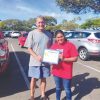USC-AVSE Dean
-Dilip Thakore (Bengaluru)

With American disenchantment with communist China growing by the day, America’s top-ranked universities are increasingly looking towards India — which currently hosts the world’s largest child and youth population — for students and academic collaboration partnerships. Suddenly American academics have discovered that the English language skills of Indian students and relative autonomy of India’s higher education institutions offer a far better opportunity for student recruitment and research collaboration than China.
This new American discovery of India has been experienced by DR. YANNIS YORTSOS, Dean of the Andrew Viterbi School of Engineering (AVSE), the engineering school of the University of Southern California (USC, estb.1880). With over 50,000 students and 3,000 faculty on its muster rolls, USC is America’s second largest private multidisciplinary university (22 schools) after NYU (New York University). The engineering school of USC, AVSE hosts 10,000 students, 20 percent of whom are from India.
Newspeg. A regular visitor to India, during his previous sojourns in this country, Yortsos signed durable academic and research partnerships with the top-ranked Birla Institute of Technology & Science, Pilani and the Indian Institute of Science, Bangalore. In early December, he made his first post-pandemic visit to India to survey the engineering education scene and renew ties with faculty and researchers in BITS-Pilani and IISc.
History. A chemical engineering graduate of Athens University, Yortsos signed up with USC for postgraduate study, earning his Masters and Ph D degrees at this top-ranked private, research-focused university. Evidently, he became enamoured with his alma mater and was inducted into the faculty of AVSE. In 2011 shortly after he was appointed Dean of AVSE, Yortsos signed up several academic and research collaborations with IIT-Delhi and other engineering and technology universities in India.
Direct talk. Since then, Yortsos’ belief in the latent capabilities of India’s engineering talent — especially students enrolled in the IITs and top-ranked science and technology institutions — has increased. “Indian engineers are among the world’s best, especially graduates of India’s Top 200 engineering colleges and universities. However with the telephone, radio and computer technologies having merged in recent years, India’s institutions of engineering education need to evolve new syllabuses and curriculums. To this end, USC and AVSE are ready and willing to collaborate with a larger number of engineering universities in India and in particular, deepen our research engagement with them,” says Yortsos.
Future plans. Yortsos believes that harnessing advanced computer science-driven technologies is the necessary precondition of any country or society attaining the United Nations sustainable development goals (SDGs) — universal health, security and life enrichment.
“The institutional autonomy and encouragement that the new National Education Policy (NEP), 2020 confers on India’s higher education institutions, provides new opportunities for USC/AVSE to deepen its engagement with higher education institutions to realise UN’s laudable SDGs in India,” says Yortsos.
That’s an offer which shouldn’t be refused.
















Add comment